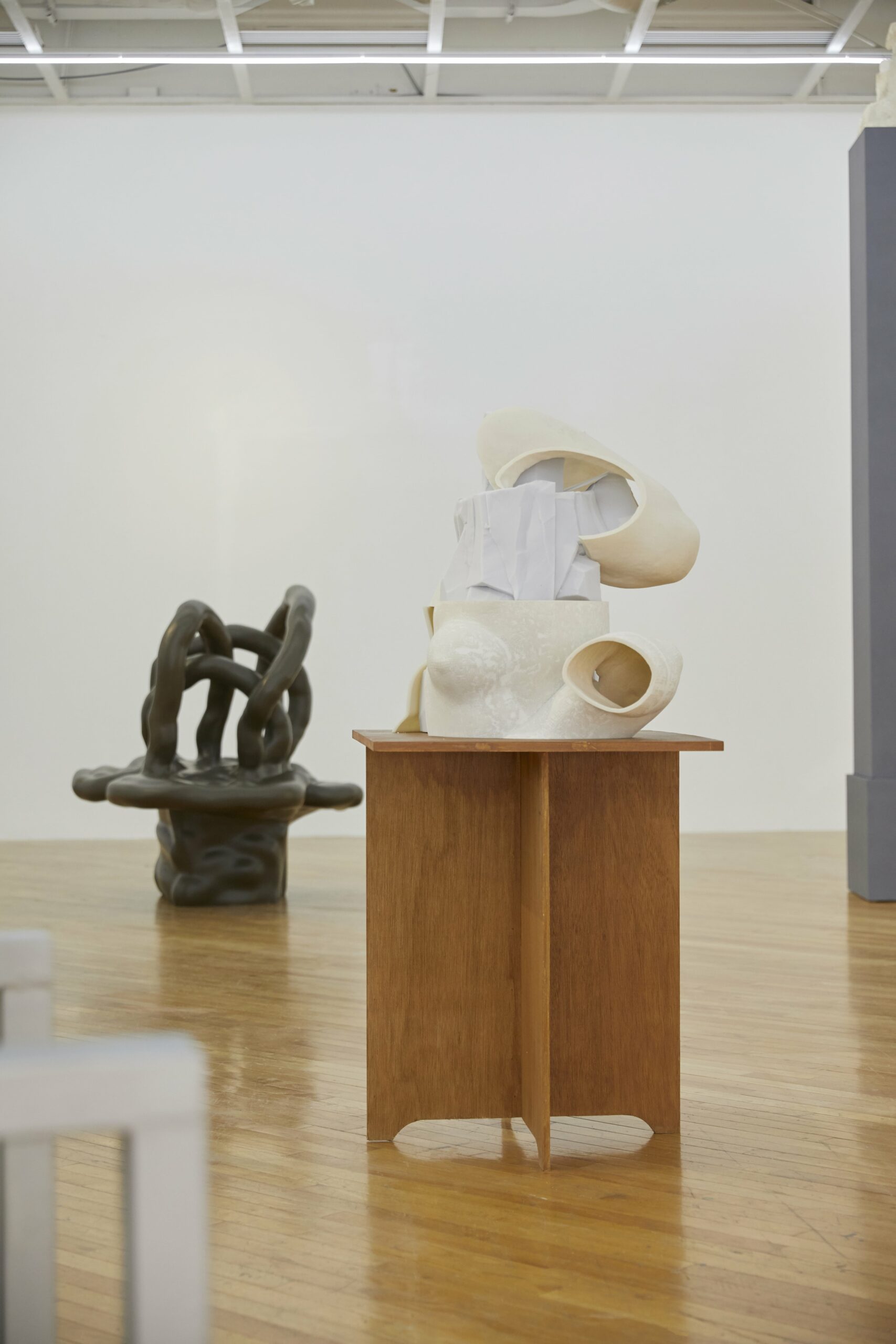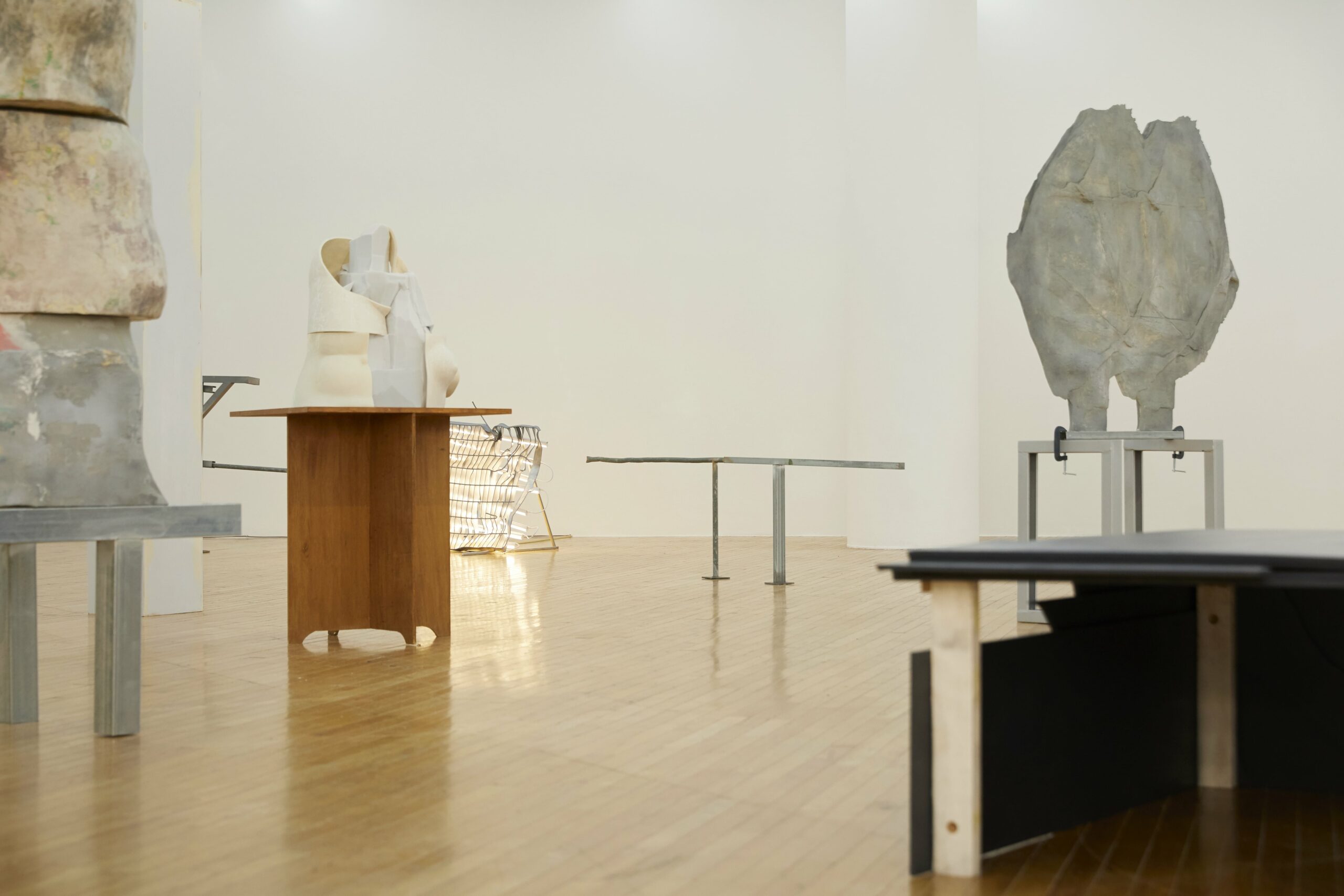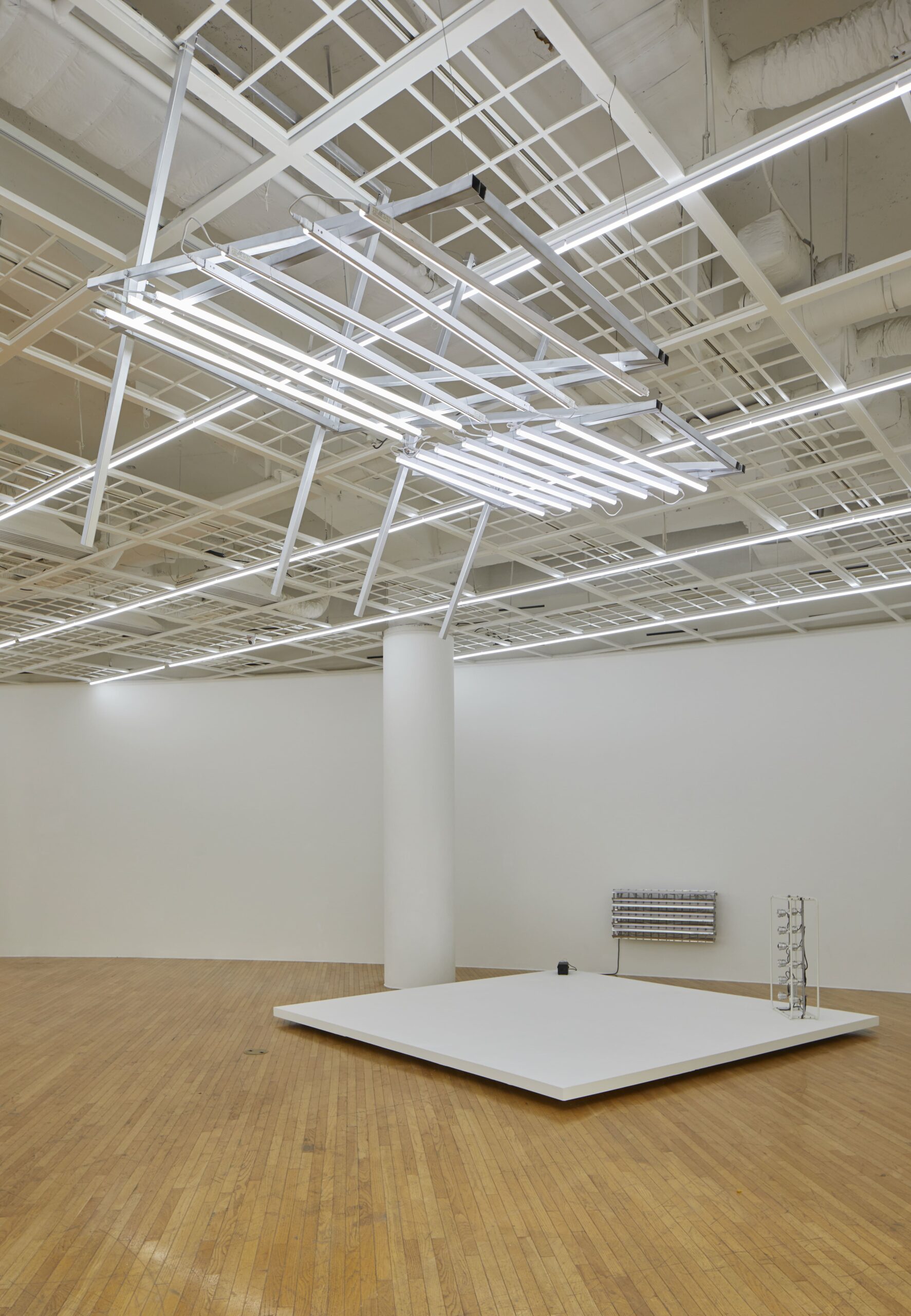Jihyun Jung: Hangdog
November 3, 2023 – January 21, 2024
Space 2, Art Sonje Center
Jihyun Jung: Hangdog
Art Sonje Center presents Jihyun Jung: Hangdog from November 3, 2023, to January 21, 2024. This exhibition examines the sculptural processes and forms of Jihyun Jung, an artist who achieves unpredictable results by experimenting with unexpected combinations of substances and passing through novel pathways of ideas. The exhibition takes its title from an adjective meaning “ashamed” or “dejected” which in mountain climbing, is a term used to refer to a situation where a person who falls on the way up, hangs in place and rests for a time before continuing their ascent. “Hangdog” is used to refer to a different situation from the ones conveyed by the root words “hang” and “dog,” and in this exhibition, it is applied to the nature and compositions of Jihyun Jung’s works as things become increasingly remote from their original state.
Jung’s process begins with the discovery of various objects and discarded industrial items that are unexpectedly encountered in the urban environments where we live. Having lived out their useful lives, these items are sometimes brought to the artist’s studio to be used as material for his sculptures. Other times, the artist makes casts of these urban findings, shaping them into the frameworks for his art. Jung uses various casting techniques within his process: creating molds using oil-clay mixture (which is well suited to quickly replicate shapes from the external environment), wrapping the objects in aluminum mesh and pressing his fingers to capture the undulations on its surface, or using the 3D scanning feature on his cell phone to transform the object’s shape quickly into digital data. Through his touch, the illusion of an object—grounded in tangible yet existing only as an empty shell—is transformed, taking on the qualities of a real sculptural piece. Here, the representation of the object as something objectivized into an assemblage of sensory elements becomes channeled into Jung’s sensory organs through the mediation of the sculptural acts. A real-world object navigates through various stages of sensory transformation and intersections between the actual and illusory as it is woven finally into the body of a sculpture. No longer confined to the ideas and concepts tied to its name, the object hovers in an intermediate state, never quite reaching any particular point.
For Peggy_Right (2023) and Peggy_Left (2023), Jihyun Jung used his iPhone to produce 3D scans of automobile scraps piled on the road near a junkyard. These flattened data were then given depth and printed into physical objects using 3D printing techniques. Objects symbolically associated with the “automobile” let go of their names and return to being “matter” when they are discarded as being unable to perform their role any longer. Scanning and outputting an object in this transitional phase, as it shifts toward its raw essence, represents an attempt to draw on the power of technology to pin down and embody a temporary, arbitrary state of the object once its practical essence has been lost. In the process, Jung ironically reveals the lost materiality by showing the boundaries of misalignment with the coarse fibers of the 3D printing, which derive from the absence of information or the limits of technology. He applies repeated labor and sculptural acts to this incomplete technologically generated mass—placing other materials onto it with his hands or grinding it down—and thus adds an element of movement to the rigid substance. The resulting sculptures have an aesthetic quality that suggests the effects of weathering or damage by years of erosion and exposure to the elements, giving the viewer the sense of a gradual disassociation of these objects from their original forms, and transporting into a realm of abstraction. Similar examples of these manifestations of sculptural properties can be found in other works in the exhibition space, such as Flower Handed (2023), Caught Sleeve (2023), and Torso from Afar (2022).
When Jihyun Jung repeatedly observes the same landscape from the same position, or when he discovers various abandoned urban artifacts, he imagines how those objects could become something else. He collects, categorizes, and recombines them from a new perspective, attempting a material shift away from the object’s essentiality. For instance, Double Decker (2018, reproduction 2022), which brightly illuminates the exhibition space, is a sculpture made by taking apart a discarded seven-meter billboard found on the side of the road. Removing its function and role as an advertising tool, the work operates as both a sculpture and a fixture, emanating light within the gallery. Facility (2022), a sculpture series made from abandoned structures and materials at a leachate treatment site, now occupies space in the form of the installation work Park (2022), while also temporarily switching functions to serve as a platform for Peggy_Right. Also found throughout the exhibition space are structures that were utilized in prior exhibitions at Art Sonje Center—walls, pedestals and benches that were originally scheduled for disposal. Jung considered how to bring those back into the exhibition space to form relationships with his own sculptures. These structures, that have been reassigned to new conditions and temporality, establish a unique territory in the space, with shapes and forms altered to take on a sculptural sense. It is a form of mutability where previously “consumed” objects in the exhibition setting are repurposed and interwoven with sculptures through different shapes. This approach parallels Jung’s methods of incorporating drifting by-products and discarded urban waste objects, allowing them to flow in unfixed, unfamiliar forms.
Jihyun Jung: Hangdog uses the shapes of objects drawn from the real world as a central point for creating various incidents. It is a landscape based on contingency, made through a constant process of moving toward new properties and forms. Whether he disassembles the tangible or assembles something that has never existed, Jihyun Jung’s creations drift about along the crevices and boundaries of the senses between the actual and the illusory, ultimately obtaining a sense of reality at some point in time, as they become entwined with the sense of sculpture. “After the movements of arrangements and the endless mutations of combinations, what appears is a limit to the narrative that arises through the exchange of influence with the object,” Jung explains. “Like a lost puzzle piece, it is constantly deferred, avoiding the moment when the image is represented through language.” Through his sculptural process, all that are lost, incomplete, or fragmented discover new realms and identities.
About the Artist
Jihyun Jung (b.1986)
Jihyun Jung’s artistic practice revolves around the exploration of the functionality and movement of sculpture, experimenting with materials such as drifting urban debris and discarded industrial elements as his creative medium. His work responds to the ever-changing urban environment, where through close exploration of its transformations, he extracts the coexisting elements that form the boundaries of urban development. Through his practice, he systematically dissects and reassembles the coexistence of discarded and recognized items, the conventional and the institutional, as well as the aesthetic and the political. Jihyun Jung’s recent solo exhibitions include Gouge hosted at Incheon Art Platform in 2022 and Multipurpose Henry at the Atelier Hermès in 2019. In 2023 he received the 2023 Kimsechoong Award for Young Sculptors.
Artist Talk
Date: Thu. December 14, 2023
Time: 16:00
Venue: The Ground-L, Art Sonje Center
[ASJC Neighbor] Facing Each Other
Empowering the Deaf with Works of Art
Date: Tue. November 7 and Tue. November 14, 2023
Time: 13:00








